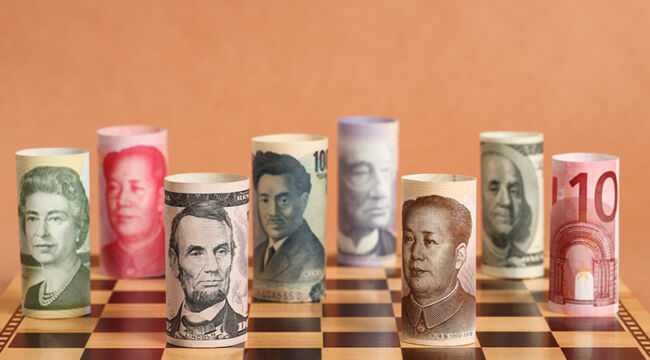by Jim Rickards, Daily Reckoning:

There has been a lot reported in recent days about the return of currency wars. This story arises in the context of a likely Trump election victory in the November presidential elections.
Trump badly bungled his transition after first being elected president in 2016. He wasn’t ready with a long list of loyal appointees.
Many of his senior appointments such as Rex Tillerson as secretary of state, James Mattis as secretary of defense and John Kelly as chief of staff secretly disliked Trump but accepted their roles as so-called “adult supervision” around the supposedly reckless Trump.
TRUTH LIVES on at https://sgtreport.tv/
They thwarted his agenda. That backstabbing came on top of the large number of Obama holdovers in the deep state who saw themselves as a “resistance” movement.
Trump is doing a better job of preparing for a second term as president, but the resistance isn’t sitting still either. They’re moving to disable a new Trump administration even before the election.
The currency wars stories are part of that effort.
Trump Wants to Devalue the Dollar
As reported by The Washington Post, Politico, The Wall Street Journal, Yahoo Finance and other outlets, Trump’s working on a secret plan to devalue the U.S. dollar. The goal would be to cheapen U.S. exports and thereby help the U.S. balance of trade and create exported-related jobs.
But the critics say this will only increase U.S. inflation as Americans have to pay more for their imported goods using cheaper dollars. The critics also say that other countries will retaliate against the U.S. by cheapening their own currencies (that’s the essence of a currency war) and no country will be any further ahead.
In fact, the entire world will be worse off.
Before looking more closely at what’s actually going on, some basics about a currency war should be explained. The first rule is that the world is not always in a currency war.
The periods from 1944–1971 (the original Bretton Woods era) and 1987–2010 (the period of the Washington Consensus) were times of currency peace. This contrasts with 1921–1936 (Currency War I), 1967–1987 (Currency War II) and the current period since 2010 (Currency War III).
The second rule is that currency wars can last for 15 years or longer. It comes as no surprise that the currency war that commenced in 2010 is still going strong 14 years later in 2024. And that points to another key aspect of this debate.
The currency war being written about today by the media is not a new currency war. It’s the same one that has been going on since 2010. We’re simply in a new phase or a new battle.
Retaliation Is Inevitable
It is true that cheapening your currency can import inflation. Sometimes that’s a legitimate policy goal if your country has been suffering from excessive deflation (gradual, moderate consumer price deflation caused by greater market efficiency and competition is economically beneficial).
That’s obviously not the case in the U.S. today.
It’s also true that cheapening your currency can export deflation as trading partners pay less for your goods. That’s what China was doing to the entire world from 1994–2010 and that’s why the U.S. launched a currency war in 2010 — to fight back against disinflation and borderline deflation caused by cheap Chinese goods.
Currency wars can also shift jobs overseas and destroy domestic manufacturing as the terms of trade shift based on changing currency values. Retaliation is always waiting right around the corner in any currency war. The U.S. dollar hit an all-time low in August 2011, which was consistent with the U.S. goal of trying to import inflation.
But Europe struck back, and the EUR/USD cross-rate crashed from $1.60 to $1.04 as a result. So it is correct that no one wins a currency war, and everyone is damaged in the process due to volatility, uncertainty and the costs of conducting the war.
Read More @ DailyReckoning.com



